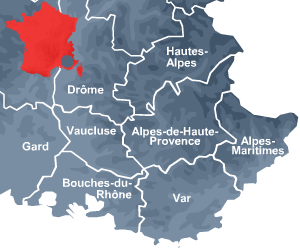| |
|
| |
Pleasures |
|
|
| |
|
| |
Fruits : descriptionThe vast plains of the Comtat used to be very dry and the sun drenched fields were planted out with the typicaly Mediterranean vines and olive trees. While these two crops may have a strong symbolic value, they weren't always very profitable and flumers were often poor. For this reason, since the days of the Romans, landowners have attempted to develop different cultures. Hence, during the course of time, other plants such as the mulberry tree or madder were grown in the area but, due to competition and/or the development of chemical products, these crops have since been abandoned.
In the 19th century major irrigation works were undertaken so that farmers could water the their parched lands and the Paris to Marseilles railway line was completed. The result of this was that farmers gradually turned to market gardening and indeed the landscapes one sees to day date back to the big change of the 19th century when huge hedges of poplar and cypress trees were planted in order to protect crops from the mistral. The quality of the fruit and vegetables grown in Vaucluse is well known today on the international market. Asparagus from Lauris, strawberries from Carpentras, tomatoes and of course the famous melons from Cavaillon have all become world famous. |
| |
|
| |
Fruits : Provence pictures |
| |
|
| |
|
| |
|
| |
|
| |
|
| |
|
|
|
|
| |
|
| |
|
|
|
| |
|
| |
 -t.jpg) |
|
|
| |
|
|
|
| |
Provence-Alpes-Côte d'Azur |
| |
 |
| |
|
| |
|
|
 Most Loved Tags Most Loved Tags |
| |
Le Pont du Gard, Côte d'Azur, Cigale, Hôtel Crillon le Brave (Relai & Château), Le Verdon, Le Luberon, Le Mont-ventoux, Lavande, kartpostal, Cathédrale Saint-Sauveur, Cathédrale Saint-Trophime d'Arles, Le Palais des Papes, Abbaye de Sénanque, Moulins de Provence, Dentelles de Montmirail, Abbaye de Montmajour, MuCEM - Musée des civilisations de l'Europe et de la Méditerranée, HÔTEL RESTAURANT DU LACHENS, Théâtre Antique d'Orange, Paysages de Provence |
| |
|
| |
|
|